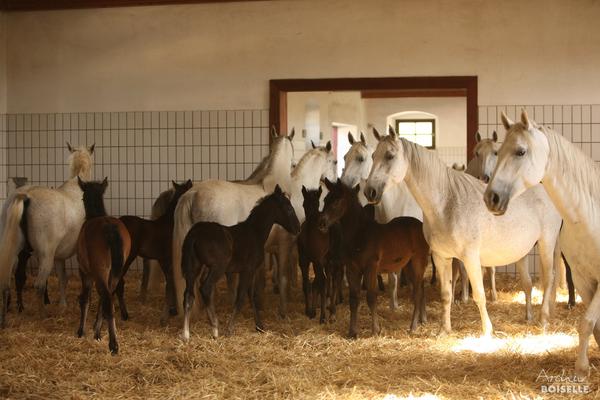Knowledge concerning the breeding of Lipizzan horses
Knowledge concerning nature and the universe in Styria, inscribed 2016
Across all of Europe, Lipizzans represent the only performance horse breed that has been raised in the traditional way since the Renaissance. The Lipizzans’ preservation is based on extensive knowledge about breeding, caring for, and training these horses, knowledge that has been passed on from generation to generation in a largely oral manner. The bearers of this knowledge in Austria are the employees of the federal stud farm in Piber, who have been breeding Lipizzans for the Spanish Riding School in Vienna since 1920.
All of this stud’s employees come from the environs of Piber and feel a strong connection to the Lipizzan breed, an affinity that has given rise to things including a special vocabulary to describe the horses—as in the common reference to their “Roman noses.” The annual performance test, the dispatching of the stallions to the “High School” of the Spanish Riding School in Vienna, and the annual on-farm blessing of the horses on 26 December all help generate a strong sense of identity among the employees of the stud, while the annual autumn parade and the tradition of driving the horses down from the Alpine pastures in early autumn give the entire region a feeling of identity and continuity.
The knowledge required for the breeding of Lipizzans has to do with horse-breeding principles, species-appropriate horse husbandry and raising, suitable human-horse interaction, and training methods based on classic principles, as well as selection measures and trained breeder’s eye. The Gstütler [stud farmers] receive years of training by experienced hands, years spent in direct contact with the horses, with the basis for passing on the relevant knowledge consisting in daily visits to all of the stalls and daily meetings of the employees to discuss the breeding herd. Alongside running the stud farm itself, international exchange with other Lipizzan studs is essential. The breeding records in the studbooks go back several centuries, and in accordance with age-old tradition, these notes continue to be made by hand and in duplicate.
Contact
Downloads
- Application form (in German only) 6 MB (pdf)
- Expertise Druml (in German only) 2 MB (pdf)
- Expertise Brem (in German only) 291 KB (pdf)


![[Translate to EN:] © J. Ségur/ZED, with the permission of UNESCO](/fileadmin/_processed_/d/b/csm_Convention-2003-IKE_0832a6a47d.jpg)
![[Translate to EN:] © ÖUK](/fileadmin/_processed_/3/9/csm_P1011318_7eac86402f.jpg)

![[Translate to EN:] © Weitblickfilm](/fileadmin/_processed_/9/8/csm_Workshop_17_2dee1e1fd8.jpg)